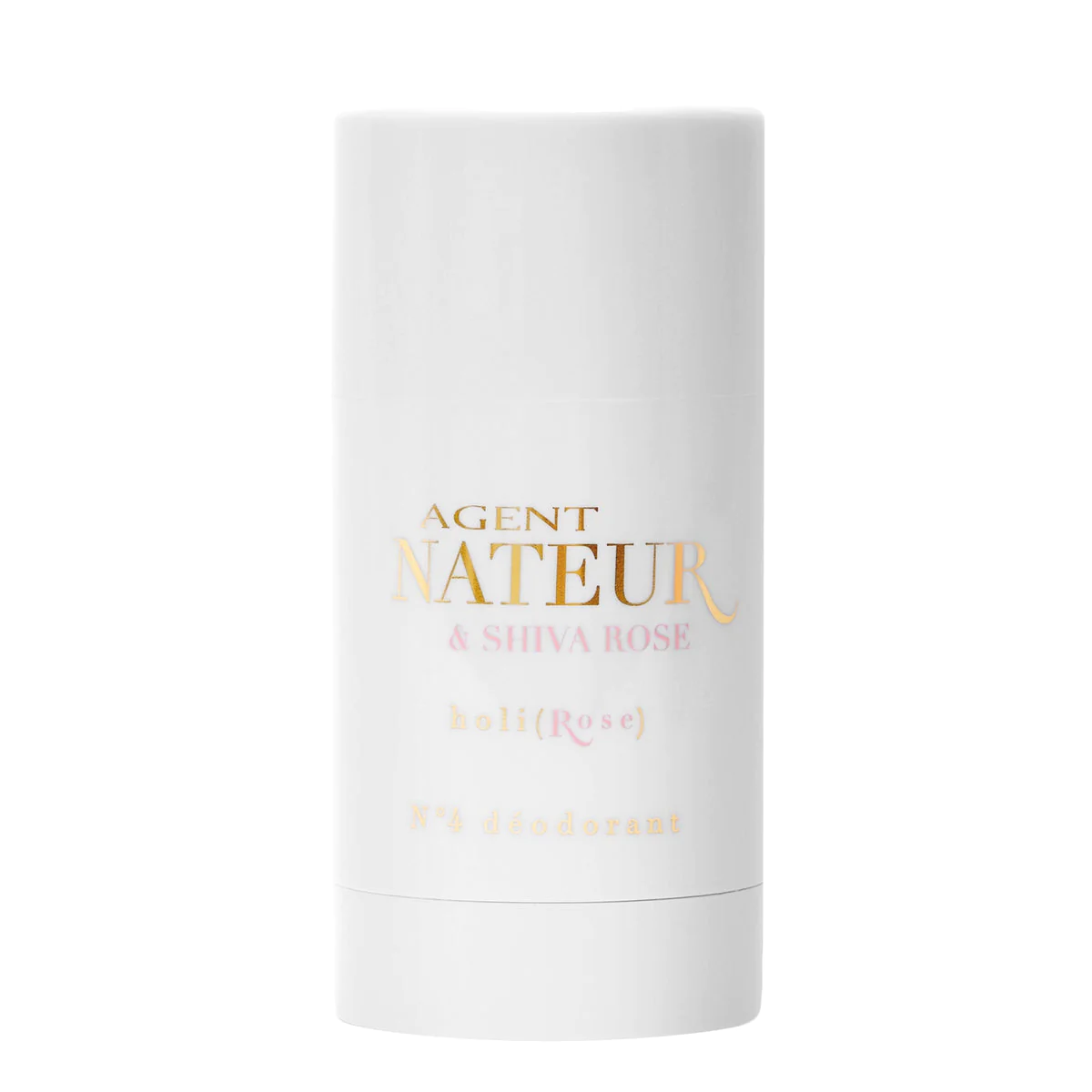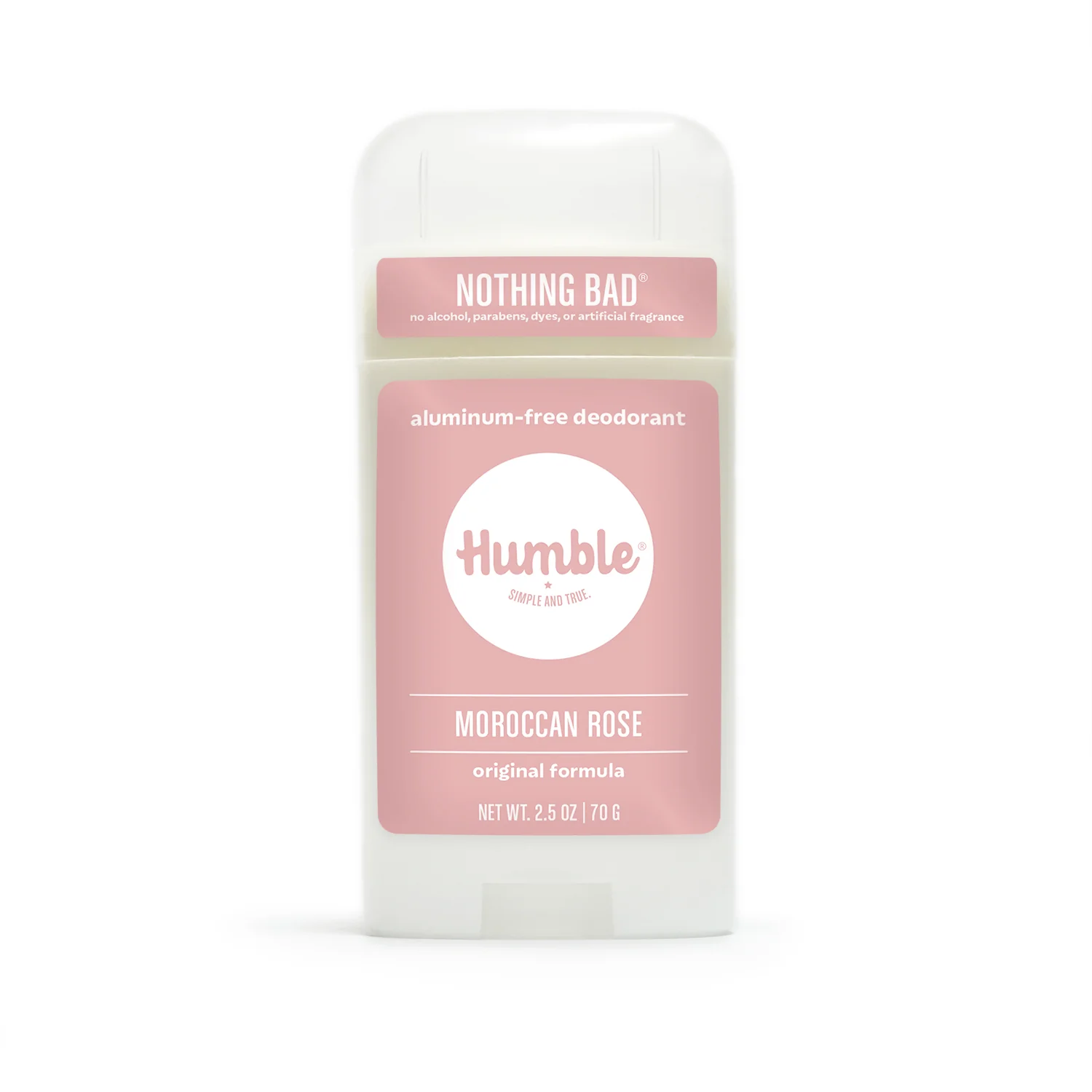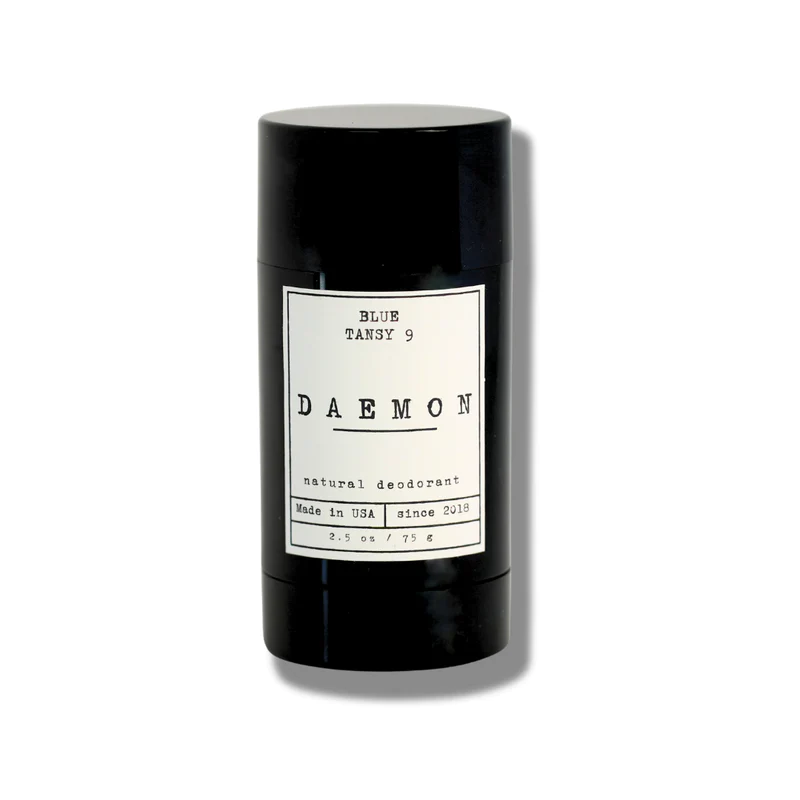Deodorant
*Originally published September 2021, updated October 2023
Did you know the FDA requires the following warning statement on antiperspirants: “Ask a doctor before use if you have kidney disease.”
This warning label exists because antiperspirants contain aluminum and transdermal absorption can occur.
Problem with Aluminum in Antiperspirants
When antiperspirants containing aluminum compounds (such as aluminum chloride or aluminum chlorohydrate) are applied to the skin, they are absorbed into the body and can accumulate over time. One study found that underarm shaving along with antiperspirant usage is associated with an early age of breast cancer diagnosis. Studies from 2020 and 2021 show that aluminum chloride contributes to chromosomal instability and confirms the carcinogenic potential of aluminum on breast cells.
Deodorant vs Antiperspirant
Deodorants do not contain aluminum compounds whereas antiperspirants do. The function of the aluminum compound in antiperspirant is to block sweat glands. Since body odor is caused by sweat and bacteria, antiperspirants aim to prevent sweating. Sweat is the bodies’ ability to cool itself and disrupting this process is unnatural and potentially harmful.
When antiperspirants are applied to the skin, aluminum is absorbed into the body and can accumulate over time.
Switching from Antiperspirant to Deodorant
Switching to deodorant reduces you exposure to aluminum compounds which are neurotoxic and can promote neurodegenerative diseases.
When making the switch, avoid products that contain the following aluminum compounds: aluminum broohydrate, aluminum chloride, aluminum chloride hexahydrate, aluminum chlorohydrate, aluminum chlorohydrex, aluminum citrate, aluminum dichlorohydrex, aluminum sesquichchlorohydrate, aluminum sesquichlorohydrex, aluminum sulfate, aluminum trichloride, aluminum zirconium, aluminum zicronium tetrachlorohydrex, sodium aluminum chlorodhyroxy lactate, aluminium chloride, aluminium trichloride, and trichloroaluminum.
Know that when you switch from antiperspirant to deodorant, there can be a transition period as you adjust, since natural deodorant does not block sweat glands. If you experience irritation, you may be sensitive to baking soda and may benefit from trying a baking-soda free version, which many non-toxic brands offer. Deodorant is personal and what works best for one person may not for the next.
Other Ingredients to Avoid
In addition to aluminum compounds, there are other potentially harmful ingredients commonly found in deodorants that should be avoided including the following:
Talc - can be contaminated with asbestiform fibers which are known carcinogens. There is no safe level of exposure to asbestos.
Fragrance – mix of fragrance and chemicals associated with allergies, dermatitis, respiratory distress and potential effects on the reproductive system. Can contain unnamed toxic ingredients like phthalates which are associated with developmental and reproductive toxicity, endocrine disruption, and cancer.[7][8][9][10]. Read more about why you should avoid fragrance here.
Butylated hydroxytoluene (BHT) - preservative with concerns of skin, eye, and lung irritation, and organ system toxicity. Limited evidence of carcinogenicity and endocrine disruption.[12]
Pareth - an alkyl PEG ether made from the reaction of fatty alcohols and ethylene oxide. Because it is an ethoxylated ingredient, pareth can contain 1,4-dioxane and residual ethylene oxide which are carcinogenic.
Petrolatum - derived from petroleum and can contain toxic polycyclic aromatic hydrocarbons if not properly refined. In the EU, petrolatum must be refined but this is not required in the US.
Mineral oil - derived from petroleum and can contain toxic polycyclic aromatic hydrocarbons if not properly refined. In the EU, petrolatum must be refined but this is not required in the US.
Cyclopentasiloxane - associated with reproductive toxicity and considered a substance of very high concern by the European Chemicals Agency for being persistent, bioaccumulative and toxic. It is restricted in the EU under REACH regulations. Cyclopentasiloxane may contain the impurity cyclotetrasiloxane which is a reproductive toxin.
Best Non-Toxic Deodorants
Agent Nateur Holi (rose) and Humble Morrocan Rose both smell wonderful, glide on smoothly and do not transfer onto clothes. Daemon Blue Tansy 9 is an effective men’s deodorant that women can use as well. Agent Nateur and Humble offer sensitive versions for those that are sensitive to baking soda.
Save 10% on Agent Nateur holi(rose) at Safe and Chic with code switchnatural10.
Save 15% on Humble with code SWITCHNATURAL15.
Save 15% on Daemon with code switchnatural.
Antiperspirants to Avoid
Secret Clinical Strength contains Aluminum Zirconium Tetrachlorohydrex, fragrance, pareth, petrolatum, mineral oil, cyclopentasiloxane, talc.
Dove Advanced Care contains aluminum chlorohydrate, fragrance, and BHT.
Greenwashed Antiperspirant
Tom’s of Maine Antiperspirant is marketed as clean although it contains aluminum chlorohydrate and fragrance.
References
[1] [European Commission Opinion On the Safety of Aluminium in Cosmetic Products][1] https://ec.europa.eu/health/scientific_committees/consumer_safety/docs/sccs_o_153.pdf
[2]https://www.ncbi.nlm.nih.gov/pmc/articles/PMC2946821/#targetText=Aluminum%20is%20environmentally%20prevalent%20and%20ingested%20by%20humans.,exacerbated%20in%20several%20neurodegenerative%20diseases.
[3] https://www.ncbi.nlm.nih.gov/pubmed/14639125
[4] https://scholarlycommons.pacific.edu/cgi/viewcontent.cgi?referer=https://www.bing.com/&httpsredir=1&article=1046&context=phs-facarticles
[5] https://oehha.ca.gov/chemicals/talc-containing-asbestiform-fibers
[6] https://www.ncbi.nlm.nih.gov/pmc/articles/PMC4164883/
[7] https://www.ncbi.nlm.nih.gov/pmc/articles/PMC5093181/
[8] https://oehha.ca.gov/media/downloads/proposition-65//p65list091319.pdf
[9] https://www.ncbi.nlm.nih.gov/pmc/articles/PMC4097177/
[10] https://www.ncbi.nlm.nih.gov/pubmed/14572300
[11] https://www.ncbi.nlm.nih.gov/pubmed/21611683
[12] https://toxnet.nlm.nih.gov/cgi-bin/sis/search/a?dbs+hsdb:@term+@DOCNO+3913
[13] https://pubchem.ncbi.nlm.nih.gov/compound/Butylated-hydroxytoluene#section=Exposure-Routes</sup>
[14]:https://ec.europa.eu/health/scientific_committees/consumer_safety/docs/sccs_o_153.pdf










